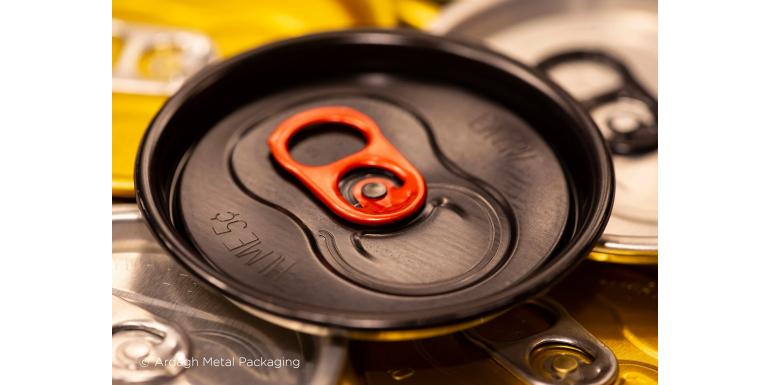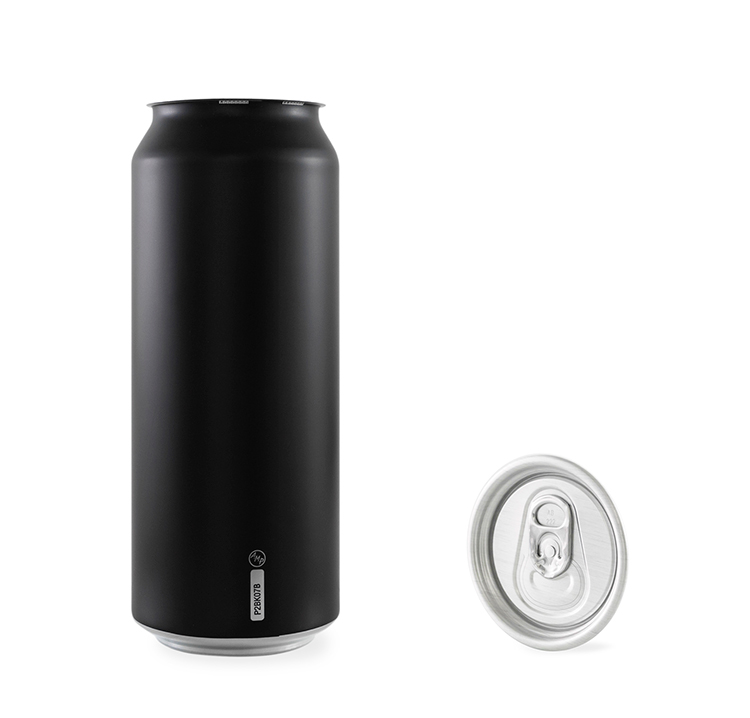Promet and Ardagh Metal Packaging

Promet SK begins cooperation with the leading manufacturer of metal packaging, Ardagh Metal Packaging. This is a breakthrough moment for a wholesaler that has specialized in the distribution of glass containers for 30 years.
The role of packaging
Only an experienced supplier can guarantee the high quality of the product. Ardagh Metal Packaging from Luxembourg will enrich the Promet packaging catalog with an aluminum can and will become an important business partner. The ambitious plan assumes long-term cooperation that will attract new customers from all over Europe.
The standard can (silver or black) will be available in 3 capacity variants:
- 330 ml,
- 440 ml,
- 500 ml.
Ardagh encourages the use of aluminum packaging personalization options, such as:
- matte varnish,
- own lithography,
- other can capacities (available in the manufacturer's portfolio).
Each can requires a proper closure. The basic silver end can replace the golden end, black end (glossy / matte varnish) or any other, compatible with the selected cotter tab. Original design is nowadays an elementary feature of effective marketing. The huge competitiveness in the food industry is easy to see on overcrowded store shelves. A properly planned design allows you to reach the imagination of an undecided customer, which is particularly important in the context of impulsive choices that dominate in self-service stores. Moreover - according to the Packaging Strategy Association, original packaging is 6 times more effective means of promoting food products than advertising1. It is worth drawing attention to the fact that the can - unlike the bottle - is printed in 360 degrees, so it allows you to put more information. The factor determining the sale of the drink is undoubtedly the size of the container. By choosing a smaller can, we force the consumer to buy more often. Larger packaging means lower distribution costs. The decision is directly related to the target group. This is evident in the field of glass and cardboard packaging. The smaller container is perfect for traveling, at school or at work. Young people are more likely to reach for them. Large packages are chosen by families and people running a gastronomic activity. It is worth relating this tendency to individual types of canned beverages. There is a reason why beer is usually poured into 0.5 l cans, and fruit drinks up to 0.33 l. In addition, the aluminum can is dominant among people with an active lifestyle and often away from home.
All the senses
The main function of the packaging, however, is to protect the drink against harmful external factors. Metal is a shield for the natural enemies of craft beers, i.e. for light and oxygen. According to Barłomiej Żodyło from the RECAL Foundation, the aluminum can: "(...) is even more airtight and safer packaging for beer than a glass bottle, therefore the taste of the canned drink is exactly the same as it was when it was poured on the line2". The sensory experience remains the main component of the evaluation of a food product. Maybe not everyone knows that half of the experiences of meals involve all five senses. Betiny Piqueras-Fiszman proves in her article3 that a dessert served on a white plate is perceived as sweeter than the same product served on a black dish. Color psychology is a key issue for producers operating in the food industry. The drinks sector is also delivering similar conclusions. The qualities of the drink can reach the senses of the recipient already at the stage of opening the can. The characteristic sound accompanying the pulling of the tab stimulates the imagination, and the noise of sparkling bubbles awakens the appetite4. Most consumers declare that beer cooled in a can has a more refreshing effect on them than in a plastic bottle. In fact, the high thermal conductivity of aluminum means that when it comes into contact with the cold surroundings of the refrigerator, the liquid inside the container cools down very quickly.

Customer benefits
Ardagh has prepared environmentally friendly BPA-NI (not Intent) coatings for people who care about their health. The innovative method is based on the use of acrylic emulsion, which, thanks to its formable properties, can be freely processed and transformed. It is BPA-free, and therefore safe for our body. The cooperation of Ardagh Metal Packaging and Promet SK means more benefits for the customer. The wholesaler will keep stock of all standard cans from the offer. As a result, the delivery time to the recipient will be shorter. In addition, Promet will fulfill orders from one pallet. Craft breweries will also benefit from the partnership. Access to aluminum cans will now become much easier, which will surely please all lovers of the golden drink.
Both Promet SK and Ardagh Metal Packaging take care of continuous development in order to be able to effectively respond to market needs. They prove that glass and metal are the future of the packaging industry.
Ardagh Metal Packaging (part of the Ardagh Group) is trusted by leading food industry representatives in Europe, Brazil and North America. Since 2011, it has been running metallurgical plants in 9 countries and, according to reports, has sales of approximately 4.1bn USD. Awarding a platinum brand with EcoVadis not only proves its reputation. The high score of the platform is also the culmination of many years of efforts for sustainable development.
Promet SK is a company established in 1992, which started with the production of crown closures. Another important step was the expansion of the business with the distribution of glass containers (jars, bottles, gallons) and closures (caps, lids, bottle top) in various sizes. Promet SK also provides full service in the field of product packaging.
- Impact of packaging on consumer behavior, DOI: 10.21008/j.0239- 9415.2016.071.18.
- https://recal.pl/informacje-branzowe/o-tym-w-jaki-sposob-i-z-czego-powstaja-puszki- na-piwo-oraz-dlaczego-tak-wazny-jest-ich-recykling-rozmowa-drugiej-strony-z-z-bartlomiejem-wojdylo-z-fundacji-recal/
- B. Piqueras-Fiszman, J. Alcaide, E. Roura, C. Spence, Is it the plate or is it the food? Assessing the influence of the color (blackor white) and shape of the plate on the perception of the food placed on it, Food Quality and Preference
- https://www.packagingstrategies.com/articles/89102-aluminum-cans-deliver-the-sensory-experience-consumers-crave
- https://www.toyo-chem.com/en/products/cancoatings/bpa-ni/





